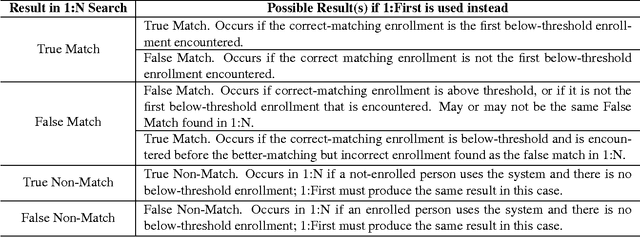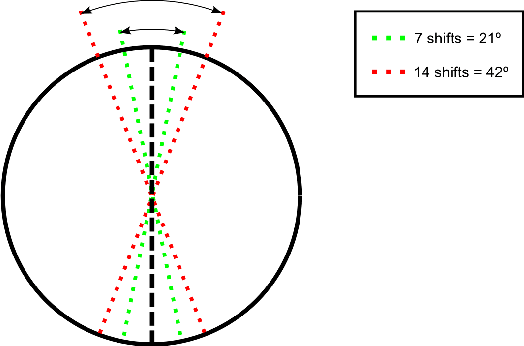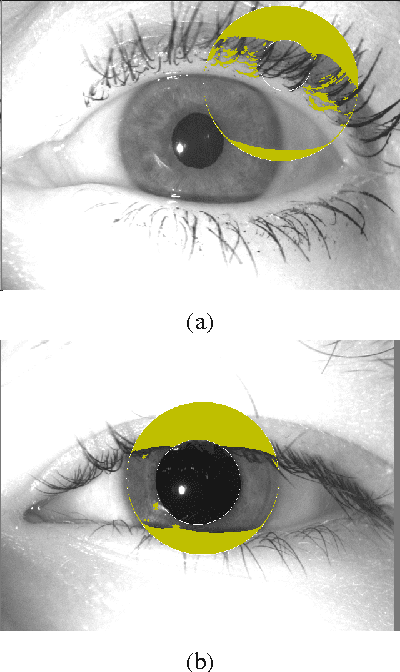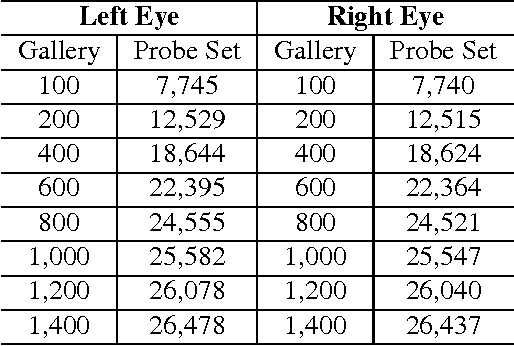An Analysis of 1-to-First Matching in Iris Recognition
Paper and Code
Feb 03, 2017



Iris recognition systems are a mature technology that is widely used throughout the world. In identification (as opposed to verification) mode, an iris to be recognized is typically matched against all N enrolled irises. This is the classic "1-to-N search". In order to improve the speed of large-scale identification, a modified "1-to-First" search has been used in some operational systems. A 1-to-First search terminates with the first below-threshold match that is found, whereas a 1-to-N search always finds the best match across all enrollments. We know of no previous studies that evaluate how the accuracy of 1-to-First search differs from that of 1-to-N search. Using a dataset of over 50,000 iris images from 2,800 different irises, we perform experiments to evaluate the relative accuracy of 1-to-First and 1-to-N search. We evaluate how the accuracy difference changes with larger numbers of enrolled irises, and with larger ranges of rotational difference allowed between iris images. We find that False Match error rate for 1-to-First is higher than for 1-to-N, and the the difference grows with larger number of enrolled irises and with larger range of rotation.
 Add to Chrome
Add to Chrome Add to Firefox
Add to Firefox Add to Edge
Add to Edge